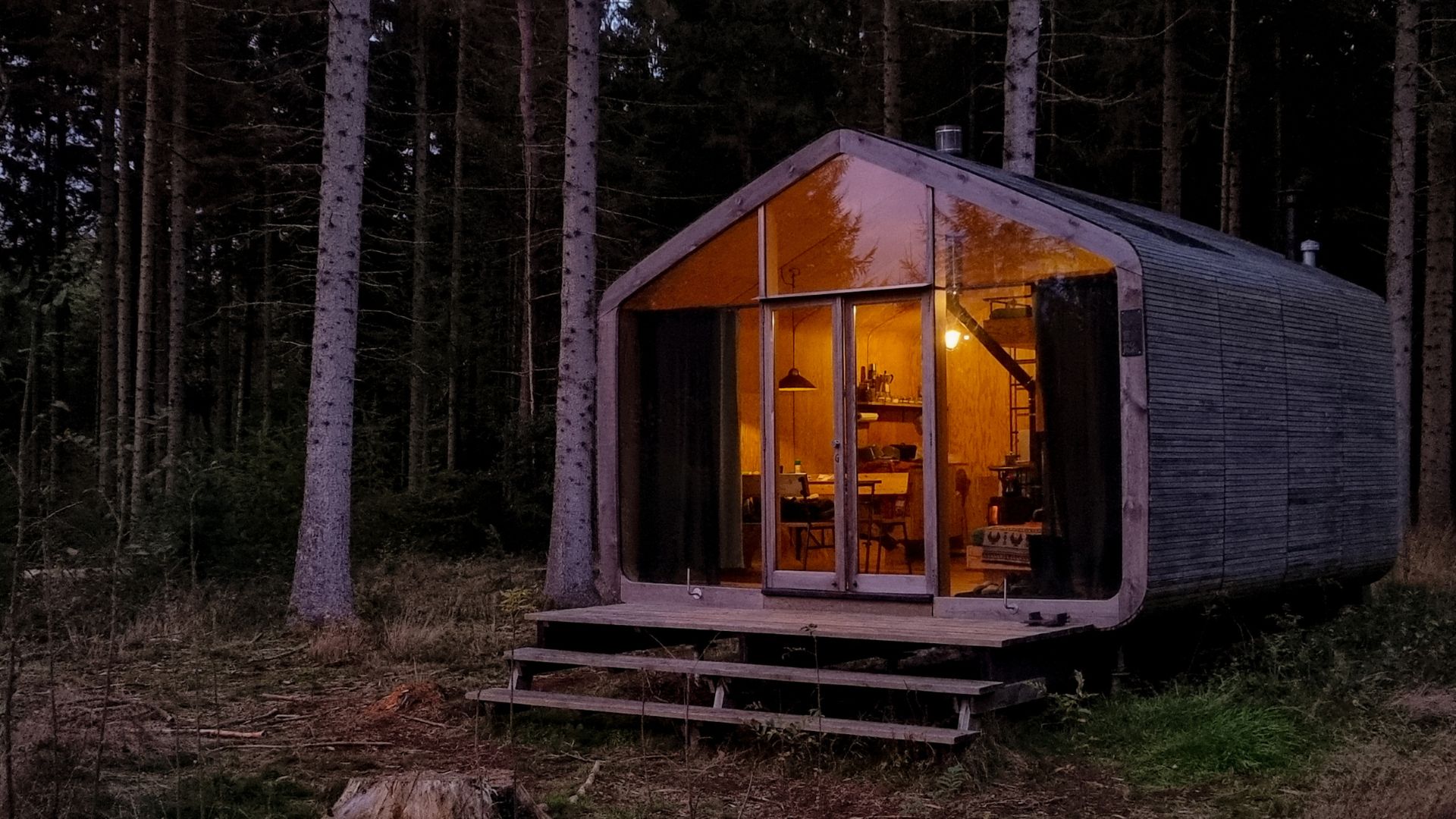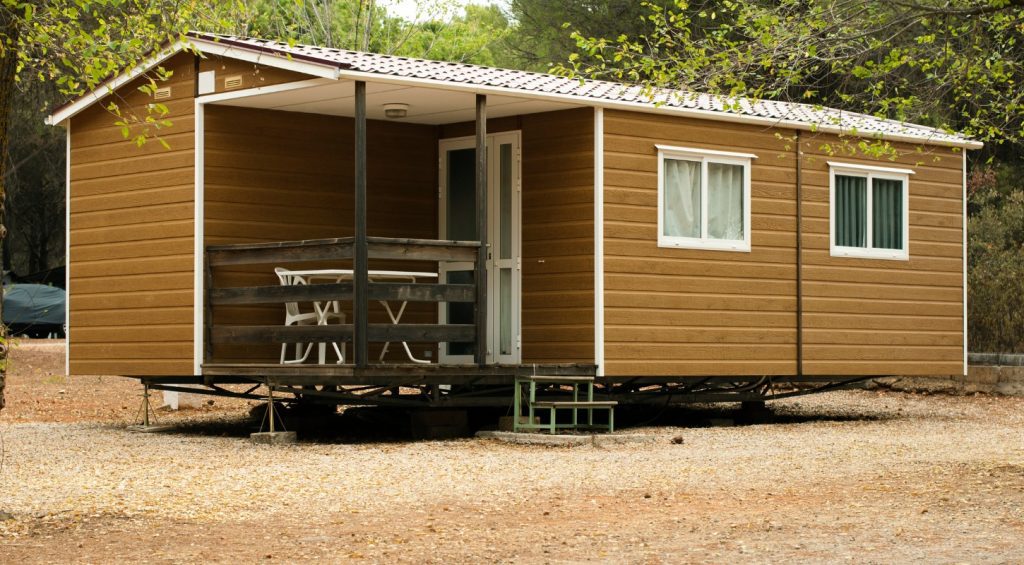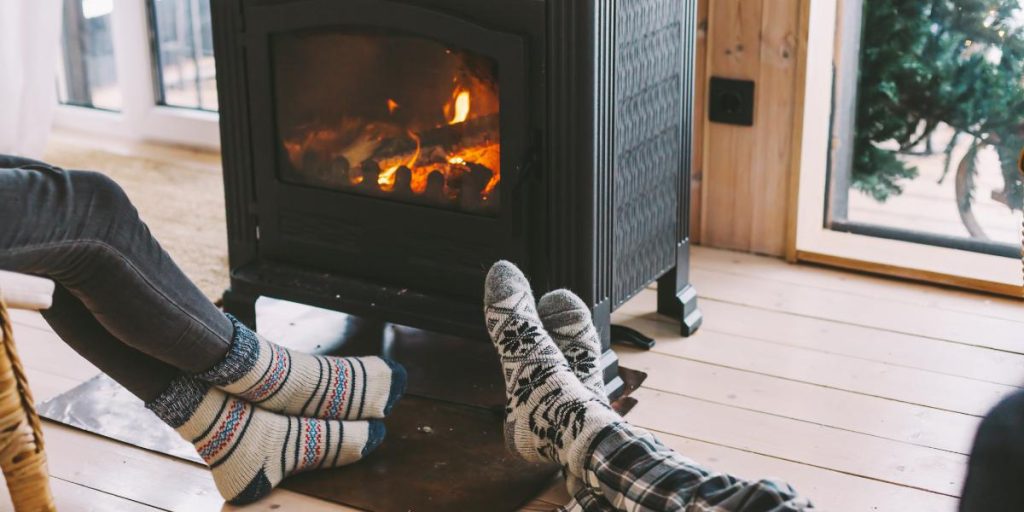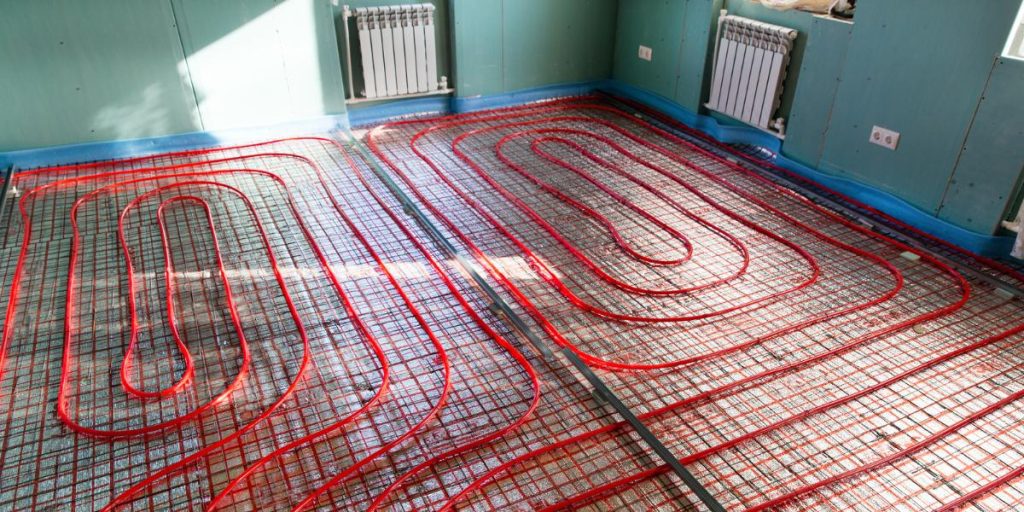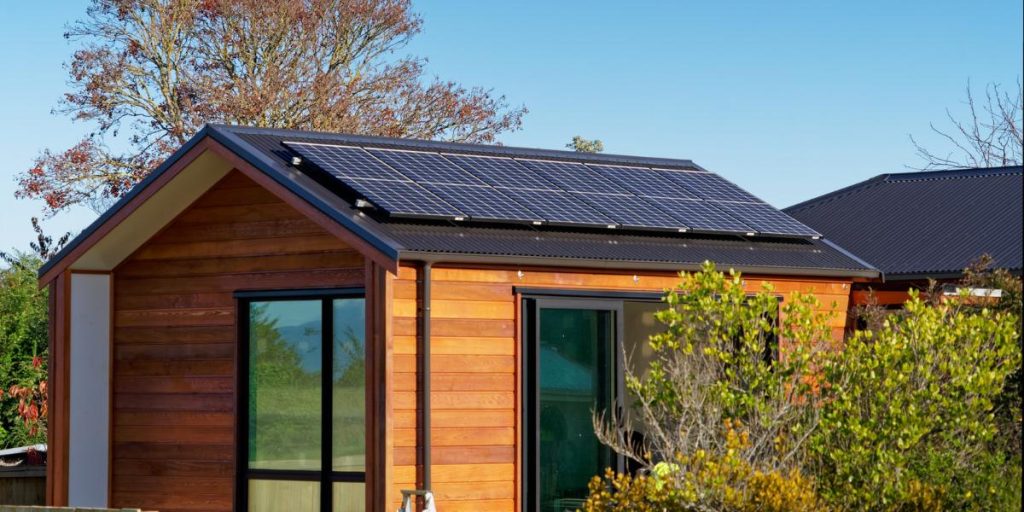How to Heat an Off-Grid Cabin: Efficient and Sustainable Options
Heating an off-grid cabin presents a unique set of challenges, as conventional methods often rely on electricity to maintain a comfortable indoor temperature. However, with a little creativity and proper planning, it’s possible to keep your cabin warm and cozy even without access to a power grid. In this article, we will explore the various off grid heating solutions available for heating your off-grid cabin, discussing the benefits and drawbacks of each method, as well as important considerations like insulation, efficiency, and safety.
More and more people are drawn to off grid living as people seek to escape the hustle of urban life or embrace a more sustainable lifestyle, off-grid cabins have become increasingly popular. When it comes to heating these spaces, it’s essential to understand the variety of heating systems available, as well as how to choose a system that is appropriate for your specific needs, location, and climate. In addition, power sources, fuel types, and the construction of the cabin itself can all play a significant role in determining the most efficient and cost-effective way to heat your off grid home.
Key Takeaways
- Consider a variety of heating systems to find the best fit for your off-grid cabin
- Insulation, efficiency, and safety are crucial factors in maintaining a comfortable temperature
- Be mindful of power sources, fuel types, and construction when selecting and installing a heating system.
Understanding Off-Grid Heating
Defining Off-Grid Heating
Off-grid heating refers to systems that provide warmth to a cabin or home without relying on traditional grid electricity. These systems are often used in remote locations or places where electricity is unavailable or unreliable also known as off grid living. Off-grid heating options include wood stoves, propane heaters, kerosene heaters, and chimney-less oil lamps, among others.
Some off-grid heating methods are highly efficient, with the ability to reduce chilly drafts or even generate electricity. For example, burning biogas has an efficiency of 80% – 90%. It’s essential to explore different off-grid heating systems to find one that best fits your needs and budget.
Heating and Cooling in Off-Grid Cabins
Heating and cooling in off-grid cabins require you to consider factors such as insulation, safety, heating power, size, installation difficulty, and price. Proper insulation is crucial to maintaining a comfortable temperature, while safety should always be a top priority when working with potentially hazardous heating methods.
When looking at heating power, it’s necessary to take into account the size of your cabin and the severity of the weather conditions you’ll face. Smaller cabins may not require as much heating power, and therefore, simpler, portable methods such as a propane heater may be perfect. Larger cabins may require more permanent heating solutions, like wood stoves or direct vent heaters.
One of the most important factors to consider when selecting an off-grid heating system is energy efficiency. Efficient systems not only save you money but help reduce your environmental impact. Some energy-efficient heating alternatives include wood-pellet stoves and a propane heater or natural gas heaters.
While off-grid cooling options might not be the primary focus of this section, it’s essential to understand that heat generated by the sun can be combatted using proper insulation and ventilation, ensuring your cabin stays comfortable during all seasons.
In summary, understanding off grid heating solutions involves exploring different heating and cooling options available for cabins that are not connected to traditional grid electricity. Finding the right system requires considering factors like insulation, safety, heating power, size, and installation difficulty. Enumerating different heating methods, such as wood stoves, propane heaters, kerosene heaters, and chimney-less oil lamps, can help you make an informed decision on the off-grid heating solution that best meets your needs and preferences without compromising on energy efficiency.
Selecting the Right Size of Heating System
Determining Cabin Size
Before choosing a heating system for your off-grid cabin, it’s crucial to determine the cabin’s size. This will influence the type and capacity of the heating system that you’ll require. Measure the length, width, and height of all rooms in your cabin to calculate the total square footage. Remember that additional factors like insulation, windows, and ceiling height can affect your cabin’s heating needs. It’s essential to select a heating system that corresponds to your cabin’s size to ensure optimum comfort and energy efficiency.
Considering Climate Variables
Aside from cabin size, the local climate will also play a significant role in selecting the right heating system. Heating systems may need to work harder or longer in extremely cold regions, so consider the average winter temperature and lowest recorded temperatures in your area. Furthermore, consider seasonal variations in humidity, which can affect indoor comfort.
To make an informed decision, take into account the following climate variables:
- Average winter temperature: Colder climates require more heating power.
- Lowest recorded temperature: Select a heating system capable of handling the most extreme winter conditions.
- Humidity levels: Areas with higher humidity may require a heating system with additional moisture control.
Understand the specific climate variables of your area to ensure you choose an appropriate heating system for maintaining a comfortable temperature in your off-grid cabin. Remember that size, cabin construction, climate, and heating system efficiency all play a role in selecting the right heating solution, so make sure to thoroughly evaluate these factors before making a decision.
Different Types of Heating Systems
Wood Stoves
A wood stove is a classic and efficient way to heat your off-grid cabin. Consisting of a metal box with a wood-burning fire inside, it has a grate to draw in oxygen and a flue running outdoors to remove smoke. Some wood stoves even have space on top for cooking, which doubles their efficiency. You can also find pellet stoves that burn compressed wood pellets as fuel, providing a steady flame with even heat distribution.
To maximize your wood stove’s heating efficiency:
- Choose a properly sized stove for your cabin’s space
- Use dry, seasoned wood
- Regularly clean and maintain your stove and chimney
Propane Heaters
Propane heaters are another popular off grid heating solution. There are various types of propane heaters available, such as:
- Direct vent heaters: These heaters can be permanently installed in your cabin, with a pipe leading outdoors to vent combustion gases and draw in fresh air
- Portable propane heaters: These heaters are lightweight and easy to move around, but they may not provide as much heat as a permanent installation
When using a propane heater, ensure proper ventilation to minimize the risk of carbon monoxide buildup.
Kerosene Heaters
Kerosene heaters are useful for heating small to medium-sized areas in an off-grid cabin. These heaters are portable, ensuring flexibility and convenience when moving them between rooms. When using a kerosene heater, make sure to:
- Use only the recommended fuel – don’t substitute with other fuels
- Keep the heater clean and maintained for optimal performance
- Provide proper ventilation to reduce the risk of carbon monoxide exposure
Solar Powered Heaters
Solar powered heaters are an environmentally friendly choice for off-grid cabin heating. There are two primary types of solar-powered heating systems:
- Solar electric panels: These panels convert sunlight into electricity, which then powers electric heaters or heat pumps
- Solar thermal panels: These panels absorb sunlight and heat a fluid, which then circulates through a hydronic heating system or radiant heat system, providing heat to your cabin
Both types of solar-powered heating systems may require backup heaters for cloudy or cold days. Proper installation and optimal positioning of solar panels are essential for maximizing solar energy collection and overall heating efficiency.
By considering the size, location, and specific needs of your off-grid cabin, select the best heating system that meets your requirements. Always prioritize safety, efficiency, and proper maintenance of your chosen heating system for a comfortable and cozy cabin living experience.
Power Sources for Off-Grid Cabins
In this section, we will discuss some reliable power sources to heat your off-grid cabin. The main options include solar power systems, wind turbines, and backup generators.
Solar Power Systems
Solar power systems are a clean and renewable option for off-grid cabins. To heat your cabin, you can install solar electric panels on your roof to generate electricity. This electricity can then be used to power efficient heaters, such as electric radiators, or even radiant floor heating. Another option is to use solar thermal panels, which absorb sunlight and directly convert it into heat. This heat can be used for space heating and to provide hot water.
To increase the efficiency of your solar power system, make sure the panels are properly angled to capture as much sunlight as possible. Consider using battery storage to store excess energy generated during sunny days and use it during the night or on cloudy days.
Wind Turbines
Another renewable energy source that can help warm your off-grid cabin is wind energy. Installing wind turbines can provide additional power to support your heating system. The electricity generated from wind can be used to power electric heaters and other appliances. Similar to solar power, you may want to install a battery storage system to store excess electricity generated by the turbines for later use.
Before choosing this power source, assess the wind resource in your area and confirm whether it is sufficient to generate enough electricity for your needs. Keep in mind that wind turbines can be noisy, so consider the impact on your enjoyment of your cabin before installing them.
Backup Generators
As a safety measure and to ensure constant power supply in your off-grid cabin, consider installing a backup generator. Generators can run on various fuels, such as propane, diesel, or gasoline. They can be used to power your heating system and other critical appliances during periods of low solar or wind energy production, or during extreme weather conditions.
Remember that fuel consumption will affect the running costs, so choose a generator with suitable efficiency and capacity for your cabin’s size and energy requirements. Don’t forget to maintain the generator regularly to ensure its long-term performance and reliability.
By using a combination of these power sources, you can effectively heat your off-grid cabin while minimizing your reliance on traditional, non-renewable energy sources.
Insulation and Construction Considerations
The Role of Insulation
Proper insulation plays a crucial role in keeping your off-grid cabin warm and energy-efficient. By adequately insulating the walls, floor, and ceiling, you can reduce heat loss and keep the indoor temperature stable. During the construction process, consider using high-performance insulation materials like EPS rigid foam, which can be installed on exterior walls and sheathing for increased thermal efficiency1. You may also look into insulating cabin floors, as this is an often overlooked area2.
Remember, your cabin’s insulation needs will vary depending on the region’s climate and how often you plan to use the cabin. As a general rule, the insulation should be sufficient to maintain comfortable temperatures with the heating system you plan to use3. Once you set a heating budget, make sure to keep track of the hours per day the system operates to ensure energy efficiency3.
Best Construction Practices for Off-Grid Cabins
When building an off-grid cabin, follow these best practices to ensure optimal insulation and heating efficiency:
- Design and orientation: Make sure your cabin design is energy-efficient and designed to maximize solar gain. Properly orientate windows and doors to provide natural light and warmth, minimizing the need for artificial heating.
- Air sealing: Eliminate drafts by applying weather-stripping4 and using caulking where necessary to seal gaps and openings in the building envelope. Air sealing reduces heat loss and prevents cold air infiltration.
- Insulation: As previously mentioned, use high-quality insulation materials with appropriate R-values for your climate and ensure proper installation to avoid gaps and thermal bridges.
- Ventilation: While sealing your cabin, ensure proper ventilation to control indoor humidity and maintain healthy indoor air quality. You might need to install vents or invest in a ventilation system, particularly if your cabin is well-insulated and tight.
- Heating options: Choose energy-efficient heating systems that work best in off-grid settings, such as direct vent heaters, propane heaters, woodstoves, or even solar electric or solar thermal panels[^3^,^4^]. Your choice depends on your energy budget and regional fuel availability.
By following these construction practices and taking insulation into account during your off-grid cabin’s design and construction, you will create a comfortable, energy-efficient living space while reducing energy consumption and costs.
Footnotes
Efficiency and Consumption
Understanding BTUs
When considering heating methods for your off-grid cabin, it’s essential to understand BTUs (British Thermal Units). BTUs are a measure of heat energy – specifically, the amount of heat needed to raise the temperature of one pound of water by one degree Fahrenheit. Different heating methods have various BTU outputs, which impact their efficiency and your overall energy consumption.
For example, propane heaters often provide between 20,000 and 40,000 BTUs, while wood stoves can range from 5,000 to 200,000 BTUs depending on their size and design. To choose the most efficient heating method, calculate the BTU requirements for your cabin space and compare it to the BTU output of each available heating option.
- Propane Heaters: 20,000 – 40,000 BTUs
- Wood Stoves: 5,000 – 200,000 BTUs
Optimizing Thermal Mass
Another critical factor in heating efficiency is optimizing thermal mass in your cabin. Thermal mass refers to a material’s ability to absorb, store, and release heat. By incorporating high thermal mass materials into your cabin’s design, you can make a significant difference in maintaining a stable temperature, reducing energy consumption, and improving overall heating efficiency.
Some common high thermal mass materials include:
- Stone and Brick: These materials are natural, abundant, and effective at storing and releasing heat. Use them for flooring, walls, or decoration near your heating source.
- Concrete: Similar to stone and brick but more versatile, concrete can be used for flooring or walls to increase your cabin’s thermal mass.
- Water: Water containers placed near your heating source can also act as a thermal mass element, absorbing, and releasing heat as needed.
Incorporate these materials into your cabin design to optimize thermal mass and create a more energy-efficient and comfortable living space. Remember to think about insulation as well, as it plays a significant role in preventing heat loss – ensuring your heating system operates efficiently.
Fuel Types and Access
Wood as a Fuel Source
Wood is a popular choice for off-grid heating due to its easy availability, renewability, and low cost. Most off-grid cabins are located in rural areas surrounded by forests, providing an abundant supply of firewood. You can either gather fallen logs and branches or cut down trees on your property, ensuring you have enough seasoned wood for heating. Wood can be burned in wood stoves, furnaces, or fireplaces, which require proper ventilation to ensure safety and efficiency. Keep in mind that wood heating requires more manual work, such as chopping, splitting, and stacking, compared to other fuel sources.
Propane and Oil
Propane and oil are other common fuel options for off-grid heating. Both fuels are widely available and can be stored in tanks on your property. Propane is commonly used for heating water, clothes drying, and cooking. It can also be used for space heating with propane heaters, which are relatively easy to install and maintain. Oil can be used with oil-burning furnaces or boilers, providing heat through a hydronic system with radiators or floor heating. When using propane or oil, make sure to choose high-efficiency appliances to reduce fuel consumption and regularly maintain the equipment to ensure optimal performance.
- Propane: Portable, works with various appliances, easy to transport.
- Oil: Suitable for hydronic heating systems, efficient in heat delivery.
Electric Heating Options
While it might be less common for off-grid cabins, some people choose to use electricity for heating, especially when they have access to renewable energy sources like solar panels or wind turbines. Electric heating options include baseboard heaters, infrared heaters, and heat pumps. To minimize electrical consumption, it’s essential to invest in energy-efficient heating appliances and properly insulate your cabin.
- Baseboard heaters: Simple installation, require minimal maintenance, provide consistent heat.
- Infrared heaters: Energy efficient, provide instant warmth, best for spot heating.
- Heat pumps: Efficient, can provide both heating and cooling, require professional installation.
In conclusion, your choice of fuel type for heating your off-grid cabin will depend on factors such as accessibility, cost, efficiency, and personal preferences. Remember to regularly maintain your heating system, regardless of the fuel source, to ensure safety and efficiency.
Safety and Maintenance
Controlling Carbon Footprint
When heating your off-grid cabin, it’s essential to minimize your carbon footprint while maintaining warmth and comfort. Choose heating methods that are eco-friendly, such as using sustainably sourced wood for a wood-burning stove or opting for solar electric or solar thermal panels. Be mindful of your fuel consumption and opt for renewable energy sources whenever possible. Keep your heating system efficient by regularly cleaning and servicing it to reduce emissions.
Managing Ash and Waste
Dealing with ash and waste is a significant aspect of maintaining a heating system in your off-grid cabin. For wood-burning stoves, ensure you regularly empty the ashtray to prevent buildup, which can decrease the efficiency of your stove and pose a fire hazard. Always dispose of ash safely, as it can remain hot for an extended period. For propane or kerosene heaters, follow the manufacturer’s guidelines for safe handling and disposal of fuel waste. Clean chimneys and flues regularly to prevent creosote buildup, which can lead to chimney fires.
Keeping Up with Maintenance
Regular maintenance is crucial to ensure the safety and efficiency of your off-grid heating system. Periodically inspect all components of your heating system, including:
- Wood-burning stoves: Check for cracks, damaged seals, and replace worn-out parts.
- Propane and kerosene heaters: Inspect hoses, connectors, and combustion chambers for wear and tear.
- Solar panels: Clean the panels to ensure optimal energy production and check for any damages.
By keeping a consistent maintenance schedule, you can prolong the lifespan of your heating system and maintain a safe, comfortable environment in your off-grid cabin.
Cost Analysis and Budgeting
Initial Price of Heating Systems
When considering heating options for an off-grid cabin, it’s important to budget for the initial cost of the equipment. Each heating system has its own price range, installation requirements, and potential maintenance costs. Here are some common off-grid heating options and their approximate costs:
- Direct Vent Heaters: These heaters are typically powered by propane or natural gas and can cost around $500 to $2,000. The installation process is relatively straightforward, but a professional may be required for proper venting.
- Propane Heaters: A standalone propane heater can cost between $100 and $500 depending on the model and size. These heaters are portable and require minimal installation.
- Conventional Fireplace: Building a wood-burning fireplace can range from $1,500 to $20,000. A less expensive option would be purchasing a wood stove, which can cost between $300 and $3,000.
- Kerosene Heaters: These heaters are affordable, with pricing typically ranging from $100 to $500. Kerosene itself is also a cost-effective fuel source.
- Solar Electric or Solar Thermal Panels: While the upfront cost can be high ($5,000 to $25,000), solar panels can generate heating with minimal ongoing costs.
Running Costs of Off-Grid Cabins
Beyond initial costs, it is crucial to consider ongoing expenses such as fuel and maintenance. Here’s a breakdown of the costs associated with various off-grid heating systems:
- Direct Vent Heaters: Fuel costs for propane or natural gas will vary based on consumption and regional prices. Maintenance can consist of periodic inspection and cleaning of the vent system.
- Propane Heaters: Propane prices can be subject to fluctuations, so budgeting for fuel costs is essential. Maintenance for these heaters is generally low, with occasional cleaning and inspection needed.
- Conventional Fireplace: Ongoing costs for wood-burning fireplaces or stoves include obtaining the firewood. If you have access to free wood, this can be a very cost-effective heating option. Chimney maintenance and cleaning are necessary to prevent safety hazards.
- Kerosene Heaters: Fuel costs for kerosene heaters are generally low, but prices can vary depending on regional market conditions. Regular maintenance includes cleaning and replacing wicks as needed.
- Solar Electric or Solar Thermal Panels: After the initial investment, solar panel systems can have very low running costs. Maintenance involves periodic cleaning and inspection of panels and system components.
Keep in mind that these costs may vary depending on factors such as the size of your cabin, regional climate, and personal preferences. It’s important to thoroughly research your options and weigh the costs against your priorities and budget.
Do-It-Yourself Off-Grid Heating
When trying to heat your off-grid cabin, there are various options to consider for effective results. In this section, we will discuss two popular do-it-yourself methods: building a wood-burning stove and installing solar panels.
Building a Wood Burning Stove
A wood burning stove is a highly efficient heating option for an off-grid cabin. It provides a cozy atmosphere, and if you have a reliable source of wood, it can be a cost-effective solution. To build your own wood burning stove, follow these steps:
- Choose the right location: Pick a central area in your cabin where the heat can be easily distributed. Ensure the location has proper ventilation and is away from any flammable materials.
- Select the stove material: A wood burning stove can be made of various materials like cast iron, steel, or soapstone. Each has its advantages and disadvantages, so choose based on your preferences and budget.
- Build the stove base: Create a non-combustible base for your stove made of materials like bricks, tiles, or concrete. This base should extend at least 45 cm (18 inches) from the stove’s front and 20 cm (8 inches) from the sides and back.
- Install the stove pipe: Connect a stove pipe from the stove to the outside. It should be insulated, properly sealed, and compliant with local building codes.
- Test the stove: Before regularly using your wood-burning stove, conduct a test burn to ensure proper functioning and ventilation.
Remember to maintain your wood stove by regularly cleaning the interior and inspecting it for any wear or damage.
Installing Solar Panels
Solar panels can provide an effective and environmentally friendly way to heat your off-grid cabin. They can be used to power electric heaters or connected to a solar thermal system for additional heating options.
- Choose your solar panel system: Decide whether you want a solar electric system (photovoltaic) or a solar thermal system (for heating water and air). Consult a professional if you’re unsure which option is best for your needs.
- Select the appropriate solar panels: Research the different types of solar panels, including monocrystalline, polycrystalline, and thin-film options. Each one varies in efficiency, cost, and installation requirements.
- Determine the ideal location: Your solar panels should be installed in an area that receives maximum sunlight exposure. Depending on your cabin’s location, this could be on the roof or at ground level.
- Install the mounting system: Set up a secure mounting system based on the manufacturer’s instructions. Ensure the panels are properly attached to prevent damage during high winds or adverse weather conditions.
- Connect the solar panels: Wire the panels to your cabin’s electrical system, ensuring all connections are safe and efficient.
Following these steps will help you create an effective off-grid heating system for your cabin. When considering pellet stoves, remember that while they can be an efficient heating option, they require a constant supply of pellets and electricity for the auger, making them less suitable for an off-grid cabin without a reliable energy source.
Frequently Asked Questions
What are efficient off-grid heating options?
There are several efficient off-grid heating options for your cabin, including wood stoves, propane heaters, kerosene heaters, and direct vent heaters. These systems do not rely on electricity and are designed to provide consistent warmth in off-grid settings. Carefully consider your specific needs, location, and available fuel sources when selecting the best option for your cabin.
How can you heat a cabin without electricity?
To generate off grid heat without electricity, you can use various heating methods that don’t rely on grid power. Some popular options include wood stoves, propane heaters, and kerosene heaters. Another option is to install direct vent heaters, which are highly efficient and do not require electricity. These systems use outdoor air for combustion, reducing drafts and maintaining a comfortable temperature in your off-grid cabin.
Which energy-efficient systems are best for off-grid cabins?
The best energy-efficient systems for an off-grid cabin will depend on your specific needs, climate, and available fuel sources. Some popular options include wood stoves, propane heaters, kerosene heaters, and direct vent heaters. Also, consider investing in proper insulation and passive solar design to further increase your cabin’s energy efficiency.
How do propane heaters work in off-grid cabins?
Propane heaters, like Martin direct vent heaters, are excellent choices for off-grid cabins. Unlike natural gas heaters, which usually require grid connection, propane heaters only need to be hooked up to a propane tank and don’t rely on electricity. The propane fuel is ignited by a pilot light or an igniter, and the heat generated is distributed throughout the space, providing comfortable warmth for your off-grid cabin.
What alternatives exist for off-grid cabin insulation?
Alternative insulation options for off-grid cabins include natural materials, like wool and cotton, as well as other sustainable choices, such as cellulose, cork, or wood fiberboard. These options can help maintain stable indoor temperatures and improve energy efficiency. Also, consider strategies like designing your cabin for passive solar gain, using energy-efficient windows, and sealing all potential air leaks to further optimize insulation.
Are heat pumps suitable for off-grid cabin use?
Although a heat pump can be highly efficient heating solutions, their reliance on electricity may be an issue for off-grid cabins. Depending on your location and available energy sources, you may be able to power a heat pump with renewable energy options like solar panels or wind turbines. However, in many cases, alternative non-electric heating solutions like wood stoves or propane heaters may be more practical for off-grid cabins.

